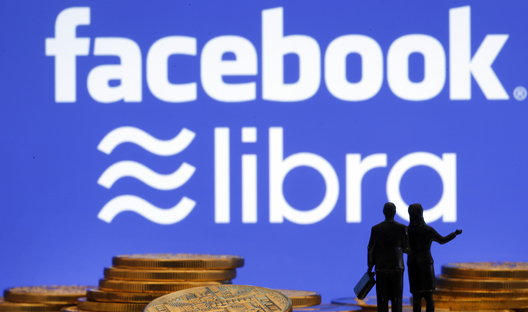Bitcoin is an electronic currency not issued by a centralised authority that uses a blockchain to have an open and transparent ledger that is coupled with economic incentives to avoid the double-spend problem.
Bitcoin was a breakthrough because, according to Princeton University, after several decades and more than 50 high profile experiments, Bitcoin was the first to successfully create a scarce digital asset that is not owned or controlled by any individual or entity, but by the entire community who participate in the network.
Bitcoin’s utility is this scarcity value governed by a decentralised network. It is an open source protocol that is designed to do one thing extremely well: align incentives to ensure that Bitcoin supply can never exceed 21 million units and process the transfer of these units among network participants. Bitcoin is analogous to gold in traditional currency markets. Bitcoin is the ‘boring’, but reliable asset.
Ethereum is to Bitcoin what Apple Inc is to gold.
Ethereum was built to be a world computer on top of which developers can build and deploy software applications. Ethereum is, like Bitcoin, governed by economic incentives created by its own native cryptocurrency, called Ether (ETH). ETH is not designed specifically to be a cryptocurrency, like Bitcoin, but to be “gas” for the Ethereum world computer. In the same way that an internal combustion engine needs “gas” to work, the Ethereum blockchain needs “gas” to process transactions.
What are smart contracts?
The most important part of the software that developers build and deploy to create applications on Ethereum are known as “smart contracts”. The applications that contain these smart contracts are known as “decentralised applications” or “dapps”.
A smart contract is an “IF”, “THEN” function. In other words, the contract knows that if event X happens, it should automatically do Y. These contracts can be extremely basic, but can also be layered to be quite complex.
Once a smart contract is deployed on Ethereum, it becomes an unstoppable piece of code that no single entity or person can stop.
Anyone can interact with these dapps, as long as the follow the rules of Ethereum and pay their gas in ETH.

Despite this rate of growth and investment returns, these innovations are still mostly flying under the radar of traditional finance and fintech players.
It is these smart contracts that has led to a hype around “blockchain technology”. These contracts can be programmed to execute many functions, but it is in their financial services applications where most innovation is happening.
For example, there is a dapp that allows holders of ETH to supply it to the smart contract. ETH supplied to the contract has a USD value. This supply acts as collateral, giving the collateral owner the ability to mint a new asset, called DAI, at a collateral ratio of 150% (i.e. one has to be overcollateralised at all times). DAI references the value of the traditional USD.
The smart contract is programmed to only release ETH back to the holder of DAI in a ratio of 150% vs the DAI destroyed. DAI can therefore trade freely among people on the Ethereum network, with the holder of DAI always knowing it is redeemable for 1,5x ETH held in DAI.
If the ratio of ETH in USD value drops below the 150% collateral level, the ETH collateral can immediately be liquidated to buy back and burn an equal amount of DAI to retain the integrity of the system’s balance sheet.
The dapp is governed by MakerDAO (MKR) token holders, who vote on dapp changes, risk metrics, interest rate changes, and everything related to the dapp.
Interest is paid to MKR holders, to create an incentive to govern the dapp prudently. The market cap of the MKR token is $500 million, after it first started trading in January 2018, just as the last crypto bubble burst.
The current circulating supply of DAI is $900 million, up from $80 million in April 2020. There are currently 172,000 wallets that hold DAI, and daily average transaction volumes amount to $300 million.

Read more: Why the NFT artwork bubble burst
In the heady days of the NFT craze that reached a climax in 2021, jpegs were selling for the same price as an original Van Gogh, and a cat meme was worth more than a Boeing. However, following the fall in the value of crptocurrency, the Non-Fungible Tokens (NFTs) bubble burst and in 2023 the much-hyped new way of buying and selling digital artwork seems like a distant memory.
Stablecoins set to grow quickly
The model described above is a novel fully decentralised collateral model to issue a USD stablecoin, but other USD stablecoins like Tether also live on Ethereum, with a market cap of $15,2 billion.
In order to maintain a peg of Tether to USD, USD are held in commercial bank accounts that are redeemable 1:1 for Tether.
The US Office of the Comptroller of the Currency on September 21st published a letter authorising banks to hold “reserves” on behalf of stablecoin issuers. This is likely to lead to dramatic to blockchain-based stablecoins in coming years.

What is a stablecoin?
According to Investopedia, "a stablecoin is a class of cryptocurrencies that attempts to offer price stability and are backed by a reserve asset." Examples include Facebook Libra, Tether and TUSD.
What is decentralised finance?
This category of activity is happening mostly on the Ethereum blockchain, and has been termed “decentralised finance”, or “DeFi”. This is to contrast the nature of the activity with centralised intermediaries or counterparties.
If you trade two crypto assets on Luno, for example, the activity is being facilitated by a centralised exchange, aka “CEX”. When you trade two assets for each other over a decentralised exchange, or “DEX”, like Uniswap, the trade is being executed by Uniswap smart contracts on Ethereum.
There has been an explosion of activity in DeFi. Volumes on Uniswap, the largest DEX recently overtook volumes on Coinbase, the largest U.S. CEX.
In mid-May 2020, weekly volumes on Uniswap were $1,5 million, but rose to $3,3 billion by mid-September—growth of 2,200x in four months.
Liquidity providers to Uniswap charge a dapp usage fee of 0,3% per transaction. Through this Uniswap LPs generate just under $500mn annually in revenue, and the Uniswap token $UNI—gives holders governance rights over the dapp and dividends accrue to it—has a market capitalisation of around $400 million.
What is composability?
With there being no gatekeepers or traditional governance mechanisms in this space, the rate of innovation is mindbogglingly fast.
In addition, developers of dapps can connect into other dapps seamlessly. The technical term for this level of seamless and permissionless integration is known as “composability”. It is like open banking, but with no restrictions or fees levied on who you can integrate with and innovate on.
The only restrictions are that you abide by the standards of the Ethereum blockchain itself. Ethereum developers refer to the nature of these integrations as “money legos”. You can build whatever you can imagine with all the pieces available to you.
Returns of some assets in DeFi have kept up with the rate of growth of usage of these systems, with 1000% returns not uncommon in recent months. Despite this rate of growth and investment returns, these innovations are still mostly flying under the radar of traditional finance and fintech players.
If there was ever an innovation that could potentially overturn the way money and banking services are offered and distributed to clients, DeFi powered by Ethereum smart contracts would be it.
Bitcoin does not come close to Ethereum on this front. For this reason we are following this space very closely to understand how Investec can draw benefit from and participate in these technologies, either for ourselves or for our clients.




